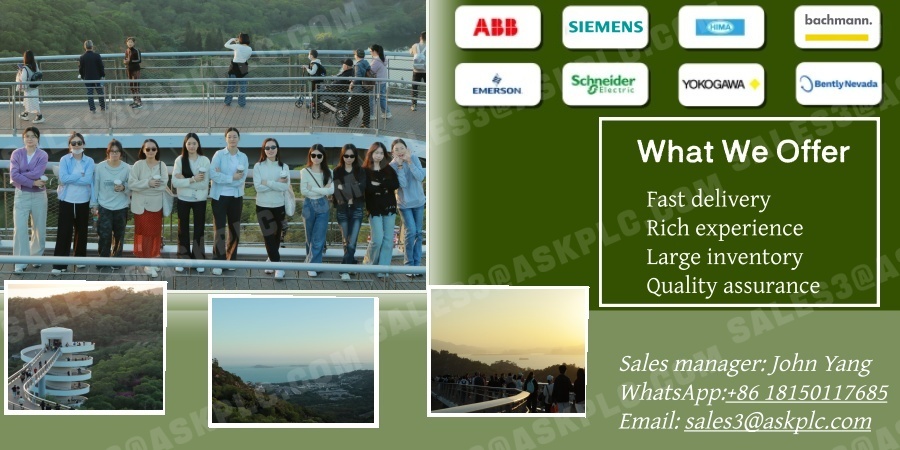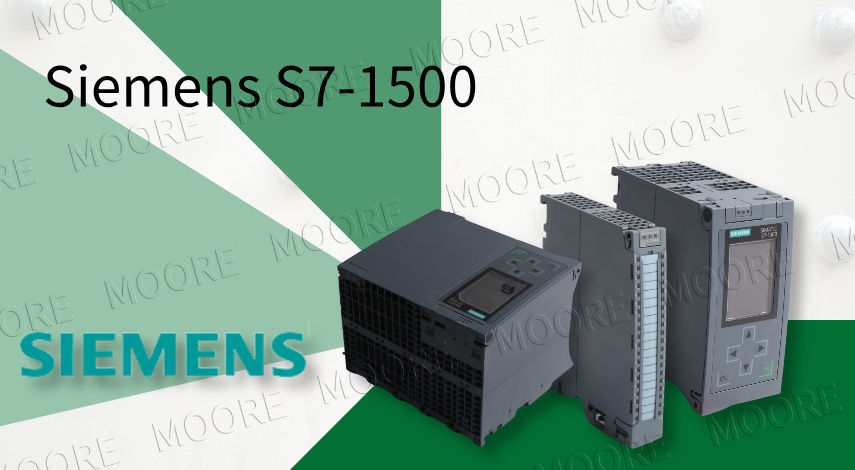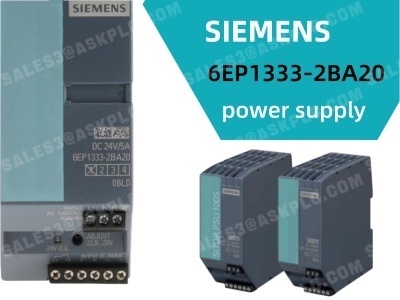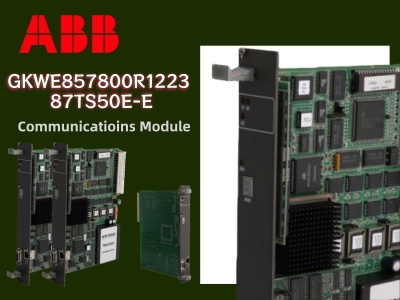
1 Year Warranty
1 Year Warranty

Product Overview The AN-520BT is a 16-bit ISA bus ARCNET network card produced by Danpex, supporting LAN communication over coaxial (coax) and twisted-pair cables. It can operate in both star and bus topologies, making it suitable for industrial control systems, legacy automation systems, and maintenance of existing networks. In the context of Industry 4.0, smart manufacturing, and Industrial IoT (IIoT), the AN-520BT provides stable data acquisition and remote monitoring for legacy control systems, ensuring reliable operation of critical equipment. Key Technical Specifications Parameter Specification Bus Type 16-bit ISA Controller Chip SMC COM90C66 Data Transfer Rate 2.5 Mbps Topology Coaxial star / Coaxial bus / Twisted-pair star / Twisted-pair bus (configurable via jumper/DIP switches) Interface 1 × BNC (coax) + 2 × RJ-11 (twisted pair) Maximum Nodes Up to 255 nodes Maximum Cable Length Coax: ~610 m; Twisted pair: ~122 m On-board Features Boot ROM, 8 KB data buffer RAM, terminator, Activity LED Supported Systems Novell NetWare, Windows 95/98/NT (partial support) Dimensions Approx. 107 × 157 mm IRQ Selectable 2–15 Certifications FCC Class A, CE Features and Industrial Applications The AN-520BT supports coaxial and twisted-pair cabling, and can operate in star or bus topology, providing flexible deployment for legacy systems. Its 16-bit ISA bus design ensures compatibility with older PCs and industrial PCs. The on-board Boot ROM and 8 KB buffer RAM support network boot and embedded system configuration, while the Activity LED provides visual network status for field diagnostics. With support for up to 255 nodes and long-distance transmission (coax ~610 m, twisted pair ~122 m), it delivers stable and reliable communication. In Industry 4.0, smart manufacturing, and IIoT scenarios, the AN-520BT acts as a bridge between legacy control systems and modern gateways, enabling data collection and remote monitoring for existing systems. It extends the lifecycle of production line equipment, ensures low-speed deterministic communication, and enhances industrial control system security and edge data processing, making it ideal for industrial automation, embedded systems, and legacy network maintenance. Installation Recommendations Install in a host supporting the ISA bus and configure IRQ settings correctly. Select appropriate jumper/DIP switch settings and interfaces according to cabling and topology. Properly terminate coaxial cables; twisted-pair cabling should not exceed ~122 m. Use a gateway or protocol converter to connect with modern Ethernet networks for data acquisition and remote monitoring. Summary The AN-520BT is a reliable and highly compatible ARCNET network card, still valuable in industrial automation, embedded systems, and legacy networks. It provides stable, deterministic communication and serves as a bridge for integrating legacy equipment into modern Industry 4.0 and smart manufacturing environments. For inquiries, product information, o...

Last weekend, the Moore Automation (MOORE) team gathered in Xiamen to embark on a team-building journey filled with warmth and a lively atmosphere. We shared delicious food at noon, narrowing the distance between our hearts with laughter; in the afternoon, we sang loudly in the KTV room, conveying the team's vitality and passion through melodies; in the evening, we strolled along the Xiamen Mountain-Sea Trail, witnessing the stunning moment of the golden sunset together and taking group photos full of smiles. Every part of the journey was permeated with the warmth of MOORE family members. We released pressure in a relaxed and pleasant atmosphere and built deeper tacit understanding from each other's company. MOORE people charge forward side by side at work, and stay together warmly as a family during team building. This unique team warmth is the core foundation for us to serve customers. MOORE will carry the strength gathered between the mountains and seas to continuously create better and more considerate value experiences for customers and partners! Should you require any of these products/solutions, please do not hesitate to contact me via the following channels: Sales manager: John Yang WhatsApp:+86 18150117685 Email: sales3@askplc.com Top-Selling Products 9160/13-11-11K 951-100500 COMPAX P100-M FX3U-48MR/ES-A SGD7S-120A00A008 17/35-TS02;1070075456-103 MR-J4-40A BU-400-35-AM CPU-5800 C500-ASC01 KSTE-KR-4K-W-SM 15/30-C CV500-SNT31 148438-001 1070064837-105 PVM58N-011AGR0BN 3TK2810-0GA02 SM 17/35-TS02;1070077383-106 E5EN-HAA2HBM-500 CJ1W-TC102 EH-CPU104 M091-FD-8502E QD62E F4 F1G-4I30 CJ1W-DA08V UM30-214111 2420-970101T9 GT2104-PMBDS 09.F0.R01-1228 3624-PR-DR-W 3NJ4133-3BF11 CDD34.017 UPI-1 GP577R-SC41-24VP 131B0453 FC-302P1K5T5E20H1 KPB1LE1-I8121462-002 25/50-TA; 055130-111

Product Overview The Siemens S7-1500 series is the latest high-performance programmable logic controller (PLC) designed for complex industrial automation systems. This series offers fast processing, modular design, rich communication interfaces, and integrated safety features, meeting the needs of manufacturing, process control, and energy management applications. Key Features: High-performance CPUs for complex logic and high-speed processing Integrated Profinet communication for fast data transfer Modular design supporting various I/O modules and function expansions Built-in safety features (Safety Integrated) simplifying safety system integration Compatible with TIA Portal for unified programming and engineering Main Technical Specifications Model CPU Performance I/O Expansion Communication Memory Safety Feature CPU 1511-1 PN 1.5 MB Up to 32 modules Profinet 1.5 MB Optional CPU 1513-1 PN 2 MB Up to 64 modules Profinet 2 MB Optional CPU 1516-3 PN/DP 4 MB Up to 128 modules Profinet/Profibus 4 MB Optional CPU 1518-4 PN/DP 16 MB Up to 256 modules Profinet/Profibus 16 MB Optional Compatible Modules and Accessories Module Type Example Model Function Digital Input Module SM 521 24V DC digital input Digital Output Module SM 522 24V DC digital output Analog Input Module SM 531 Voltage/current signal acquisition Analog Output Module SM 532 Voltage/current signal output Function Module FM 454 PID control and high-speed counting Communication Module CM 1543 Profibus DP/Profinet interface expansion Product Advantages High-Speed Processing: Fast CPU performance for complex logic and high-speed signal handling. Flexible Expansion: Modular design allows easy addition of digital, analog, and communication modules. Reliable Safety: Supports integrated safety modules, reducing industrial safety system costs. Easy Engineering: TIA Portal integration enhances project design efficiency. Strong Industrial Compatibility: Compatible with various industrial buses and protocols for seamless system integration. Application Areas Manufacturing automation lines Factory equipment control and monitoring Energy management and smart grids Water treatment and environmental systems Process industries (chemical, pharmaceutical, food & beverage) Conclusion The Siemens S7-1500 series PLC provides high performance, modular design, and integrated safety, making it a reliable choice for industrial automation. Its wide compatibility and engineering efficiency enable flexible and effective automation solutions. One-sentence overview: Siemens S7-1500 — high-performance modular PLC series for advanced industrial automation, featuring flexible I/O expansion, integrated safety, and fast communication. Contact Information For more product information or sales inquiries, please contact: Phone/Whatsapp: +8617359287459 Email: sales6@askplc.com

"Production lines suddenly shut down due to voltage fluctuations, causing losses of tens of thousands of yuan; PLC modules fail frequently, and it turns out to be power supply interference after half a day of troubleshooting; power supplies fail to start in low-temperature workshops, delaying production schedules..." In industrial automation scenarios, the stability of the power supply system directly determines production efficiency and equipment safety. Faced with these tricky problems, how should enterprises choose a reliable power supply solution among industrial automation parts and industrial spare parts? The core product of Siemens SITOP modular series - 6EP1333-2BA20 industrial switching power supply, with its characteristics of "high reliability, full adaptability, and strong protection", is becoming the "power supply guardian" for automation equipment. What: What Kind of "Power Supply Tool" Is It? SIEMENS 6EP1333-2BA20 is not an ordinary power supply, but a "stable output expert" specially designed for industrial automation scenarios. As the core model of the Siemens SITOP modular family, it accurately matches the power supply needs of medium and low-power automation equipment with 60W rated power, 24V DC stable output, and 2.5A rated current. It adopts a wide-range AC input design (100-240V AC), which can adapt to power grid specifications in different regions around the world without additional transformers; the DIN rail mounting method (35mm standard rail) makes installation in the control cabinet more convenient, and the compact size of 38mm×125mm×115mm can also save valuable space. In terms of core performance, this power supply has a conversion efficiency of more than 85%, which can not only reduce energy consumption costs but also reduce equipment heat generation; the output ripple and noise are ≤50mVpp, ensuring that precision equipment such as PLCs and sensors are not interfered with; the voltage regulation rate is ≤0.1% and the load regulation rate is ≤0.5%, so the output remains stable even when the grid voltage fluctuates or the load changes - these characteristics together constitute its "rock-solid" power supply capability. Why: Why Can It Solve the "Chronic Problem" of Industrial Power Supply? The power supply challenges in industrial sites are more complex than imagined: voltage fluctuates up and down, electromagnetic interference is dense, ambient temperature changes frequently, and the risk of load overload occurs from time to time. 6EP1333-2BA20 specifically solves these pain points through "four-fold protection + strong environmental adaptability": •Overcurrent/overvoltage/short-circuit/overtemperature four-fold protection: When the load is overloaded (120%-150% of the rated current), the output is short-circuited, or the internal temperature is ≥105℃, the power supply will automatically cut off the output and recover, avoiding damage to valuable equipment such as PLCs and HMIs, and reducing maintenance costs and dow...

❒What is it? The ABB GKWE857800R1223 87TS50E-E is a high-performance coupling communication module designed to bridge ABB Procontrol systems with human-machine interface (MMI) platforms such as factory management systems (PMS). By enabling seamless data exchange, this module ensures centralized and efficient control over complex industrial processes. As a key component often used in DCS spare parts inventories, it also fits perfectly within Distributed Control System replacement parts frameworks, making it a reliable choice for plants seeking stable long-term system integration. Beyond its communication capabilities, the module incorporates robust IGBT technology with a rated voltage of 1200V and a continuous current of 50A, allowing it to manage power conversion and control tasks with high durability. These features make it a preferred option offered by many professional DCS module suppliers in the industrial automation field. ❒Why is it important? Industrial automation environments demand reliable, real-time communication and stable power handling. This module supports redundant and partially redundant configurations, ensuring uninterrupted communication while delivering peak collector currents of up to 100A during short pulses (≤10ms, duty cycle ≤10%). Frequently utilized in DCS spare parts inventories and broader Distributed Control System replacement parts strategies, it provides both communication stability and power performance that plants rely on. The combination of precise signal conversion and high-efficiency power handling also makes it a preferred choice recommended by many professional DCS module suppliers, supporting safety-critical and high-performance industrial operations. ❒Where is it applied? Primarily deployed in industries such as petrochemicals, power generation, smart manufacturing, and renewable energy systems, the GKWE857800R1223 facilitates integration of MMI systems like POS 30, S+ Operations, or 800xA with Procontrol systems. As a component frequently stocked within DCS spare parts inventories and widely recognized among Distributed Control System replacement parts, it is often supplied by professional DCS module supplier networks to support long-term system operation. Its embedded IGBT functionality supports industrial drives, servo systems, UPS units, welding power supplies, and inverter applications, enabling cross-system monitoring, data collection, and control command execution while maintaining efficient energy management. ❒When is it most useful? It is particularly critical in real-time process control scenarios where high-speed communication and precise power switching are required. The module features fast switching characteristics, including an on-delay time of 200ns, rise time of 350ns, off-delay time of 300ns, and fall time of 250ns, ensuring responsive control for demanding industrial tasks. Additionally, the freewheeling diode reverse recovery time of 200ns and reverse recovery charge of 1.2μC help to han...

Introduction: Revolutionizing Industrial Power Monitoring GE has launched the UR8FV CT/VT Module. It is a precision-engineered solution that improves monitoring accuracy and reliability for turbines and industrial power equipment. The module integrates seamlessly with GE’s Universal Relay (UR) platforms. It collects and transmits precise current and voltage signals. This helps operators optimize performance, enhance safety, and reduce downtime. The module offers highly accurate current and voltage measurements. It is a strong addition to TSI modules and Turbine Supervisory Instrumentation systems. With this support, operators can minimize downtime, improve efficiency, and maintain safer operations in both industrial and power generation environments. Addressing Key Industry Challenges Traditional CT/VT modules often face issues such as inaccurate readings, false alarms, and high maintenance needs. These problems may lead to downtime, costly repairs, and reduced system safety. The GE Multilin UR8FV CT/VT module solves these challenges with a robust and reliable design. It supports multi-channel CT/VT and can monitor three-phase and ground circuits at the same time. It delivers current measurement accuracy of ±0.5% FS and voltage accuracy of ±0.2% FS. The module transmits precise AC current and voltage signals directly to GE UR relays. This simplifies monitoring and lowers operational risks. The UR8FV module also integrates smoothly with existing TSI spare parts and instrumentation systems. It strengthens turbine and power equipment monitoring, ensuring operational continuity and improved safety standards. Innovative Features and Technical Advantages The UR8FV CT/VT Module GE datasheet highlights several advanced features: Multi-Channel Support: Accommodates multiple CT and VT inputs for comprehensive monitoring. High Precision: ±0.5% FS current and ±0.2% FS voltage accuracy. Modular Design: Compact and rack-mount compatible, easily retrofits into existing GE UR relay systems. Industrial-Grade Reliability: Built to withstand vibration, temperature fluctuations (-20°C to +70°C operational, -40°C to +85°C storage), and high-voltage industrial conditions. Efficient Signal Processing: Ensures fast, reliable data for turbine and power equipment management. Technical Specifications: Number of CT Inputs: 3-phase + 1 ground CT (configurable 1A/5A) Number of VT Inputs: Up to 4 voltage transformer inputs (115V, 230V, 460V, 575V, depending on configuration) Current Measurement Accuracy: ±0.5% FS Voltage Measurement Accuracy: ±0.2% FS Frequency Range: 45–65 Hz Signal Type: AC current and voltage Installation Type: Rack-mount / Retrofit compatible Module Dimensions: Approx. 100 mm × 150 mm × 40 mm (varies by configuration) Operating Temperature: -20°C to +70°C Storage Temperature: -40°C to +85°C Vibration Resistance: IEC 60068-2-6 compliant Customer Benefits and Real-World Applications The UR8FV module provides clear benefits to end users: Enh...

ABB DSQC345A 3HAB8101-1/03B Industrial Control Module: Driving a New Era of Industrial Intelligence with Excellent Control Power The Dawn of a New Industrial Intelligence Age In the current digital transformation era, industrial automation is advancing towards systems that require not only intelligence but also robustness and efficiency. Amid this trend, the ABB DSQC345A 3HAB8101 - 1/03B Industrial Control Module emerges as a crucial component. It is a compact yet powerful control unit, engineered to provide outstanding performance, accurate signal handling, and stable operational capabilities in advanced automation and robotic settings. Core Features: Precision Meets Reliability TheDSQC345A serves as the central coordinating center within ABB's automation systems, ensuring the smooth implementation of complex industrial operations. It operates on a +24 V DC (±10%) power supply, consuming around 8 W of power while maintaining a typical working current of just 0.35 A. This low - power consumption showcases its remarkable energy - efficiency. With an internal logic voltage of +5 V DC and an electrical isolation level of 1500 V AC, the module effectively protects the input/output circuits from main control signals, safeguarding against voltage interference. Additionally, its integrated overcurrent, reverse connection, and surge protection mechanisms further enhance the reliability of the system, even in challenging industrial circumstances. Intelligent I/O Capabilities The DSQC345A is designed to achieve high - speed signal acquisition and response for precise control. On the input side, it comes with 16 optocoupler - isolated input points, which can handle a voltage range of 18–30 V DC. These points can detect high logic levels above 15 V and low levels below 5 V, with each input point consuming an average of 6 mA. They achieve a rapid response time of less than 2 ms, ensuring accurate and real - time feedback in automation processes. For the output, the module offers 16 output points. Each output point can handle up to 0.5 A, with a total output capacity of 4 A. The output voltage range is 19–30 V DC, and it has an ultra - fast output delay of less than 1 ms. This allows for perfectly timed actuation and seamless coordination between robotic movements and production sequences. Built to Endure Harsh Environments Industrial automation often has to function under extreme environmental conditions, and the DSQC345A is specifically designed to perform dependably in such demanding scenarios. It can operate smoothly within a temperature range of 0 °C to +55 °C and can be safely stored between –25 °C and +85 °C. The durable internal 1A self - healing fuse and high - level electrical insulation offer further protection for the system. Moreover, the module can maintain stable functionality in a relative humidity range from 5% to 95% (non - condensing), making it suitable for a wide variety of manufacturing and processing environments. Key Advantages and Inno...

Background and Significance In recent years, with the continuous growth in demand for renewable energy and the challenges faced by solar and wind power, such as weather dependence and intermittent output, a little-known but potentially huge technology—osmotic energy systems (also known as "salinity gradient energy" or "blue energy")—is regaining attention. This technology utilizes the salinity gradient between freshwater and seawater or high-salinity water flows to continuously and stably generate electricity through a semi-permeable membrane and pressure difference. Unlike solar and wind power, a key advantage of osmotic energy is that it is not limited by weather or sunlight like wind or sunlight, but can operate "day and night," continuously generating power at locations where freshwater flows into the ocean or where high-salinity and low-salinity water come into contact. Technical Mechanism Analysis Osmotic energy systems mainly have two technical pathways: ◥ Pressure-Retarded Osmosis (PRO): Freshwater migrates through a semi-permeable membrane to the saline (or high-concentration solution) side, increasing the pressure on that side. This pressure is used to drive turbines or similar devices to generate electricity. ◥ Reverse Electrodialysis (RED): An ion flow is generated between brine and freshwater through a specialized cation/anion exchange membrane, and this ion flow is converted into an electric current. In practical engineering, the performance of the semi-permeable membrane (selectivity, flux, durability) is a key factor limiting the commercialization of osmotic power generation systems. Latest Developments ● An osmotic power plant in Fukuoka, Japan, was completed and put into operation in 2025, generating approximately 880,000 kWh of electricity annually, enough to power about 220 homes. This facility is considered the second continuously operating power generation unit of its kind globally. ● The French company Sweetch Energy has developed next-generation nanofilm technology, claiming in its technical report that it can increase the power density of membrane modules to a commercially viable level. Key Technical Parameters (Illustrated) Item Current Typical Value/Range Description Membrane Power Density ≈ 1–2 W/m² (Early Prototype) General Level in Design Phase Global Potential Energy ≈ 1,600 TWh–1,700 TWh/year Theoretical Estimate Annual Power Generation (Japan Project) ≈ 0.88 GWh/year Actual Operating Data Technological and Engineering Advantages ● Continuous and Stable Output: Unlike wind/solar power, which is affected by climate, the freshwater and brine mixture can operate stably around the clock. ● Low Carbon and Environmentally Friendly: No fuel consumption, almost no greenhouse gas emissions. ● Widely Distributed Potentially: Resource availability is available in multiple estuaries, coastlines, and salt lakes worldwide. Current Challenges ● High Membrane Material Cost and Low Efficiency: There is currently a trade-off between...
Categories
New Products
Disclaimer:
Moore sells new and surplus products and develops channels for purchasing such products. This website has not been approved or recognized by any of the listed manufacturers or trademarks.
Moore is not an authorized distributor, dealer, or representative of the products displayed on this website. All product names, trademarks, brands, and logos used on this website are the property of their respective owners. The description, explanation, or sale of products with these names, trademarks, brands, and logos is for identification purposes only and is not intended to indicate any association with or authorization from any rights holder.
wechat code
